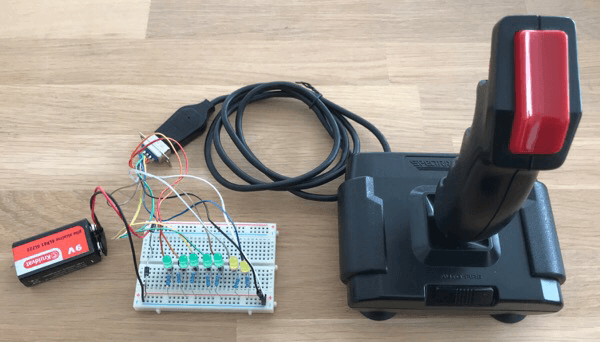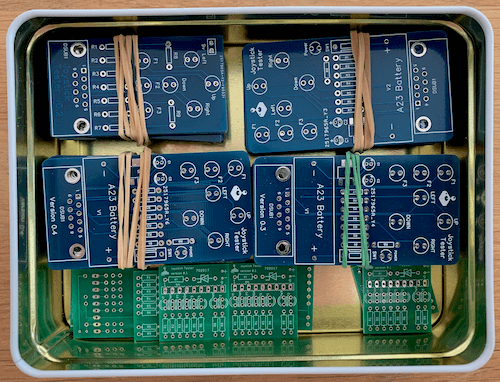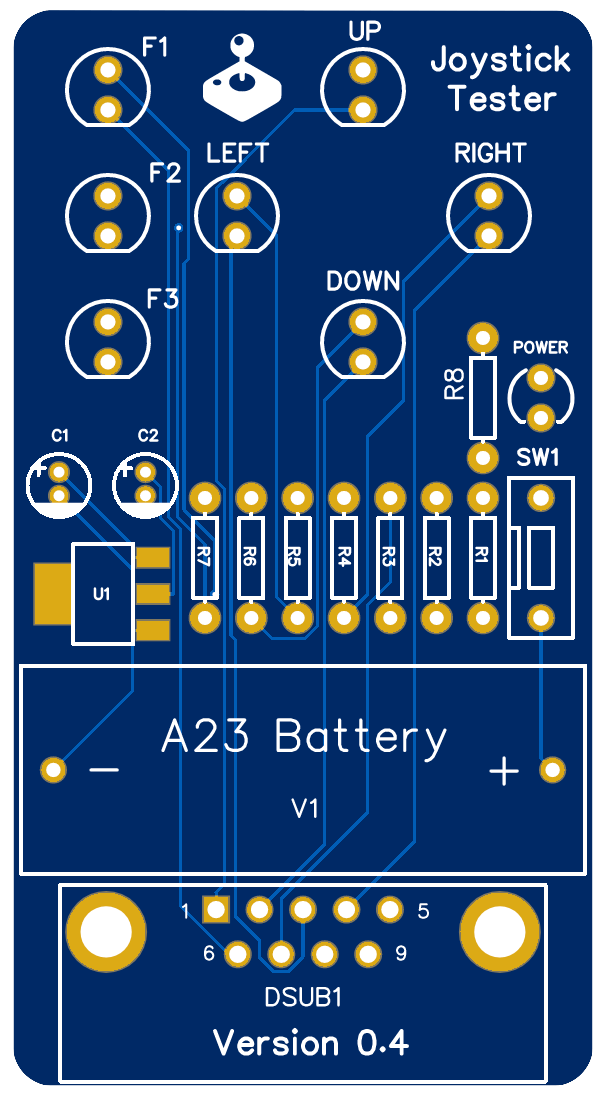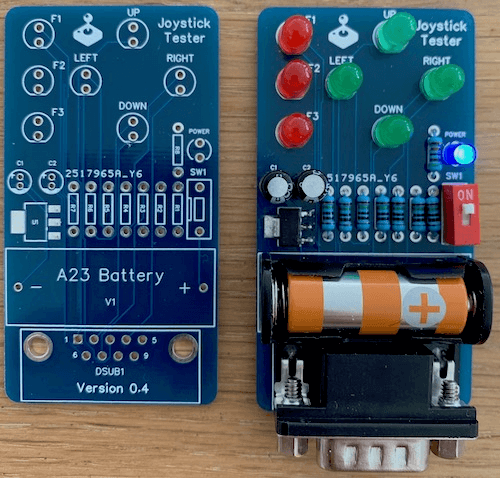Joystick tester
During the last couple of months I have collected a number of joysticks that need to be tested. I could just connect them to one of the ZX Spectrum computers for testing, but why take the risk if you can easily build a joystick tester .
Also it could come handy when on a fair you want to make sure a particular joystick is in working order before buying it.
The tester will consist of a couple of LEDs, a power source, DB9 connector and a bunch of wires. For a simple joystick a power source of 3v would be enough, but for joysticks with an auto-fire option 5v is needed. Meaning that we also need a little circuit to lower the input voltage from 6v (or 9v) to around 5v to prevent the auto-fire circuitry from being fried.
Prototype
As with the joystick adapter it helps to create a prototype first to make sure I have all the connections correct.
| Function | DB9 pin |
|---|---|
| Up | 1 |
| Down | 2 |
| Left | 3 |
| Right | 4 |
| Fire 3/Paddle | 5 |
| Fire 1 | 6 |
| +5v | 7 |
| GND | 8 |
| Fire 2/Paddle | 9 |
To build the prototype I used a breadboard and since I didn’t have the zener diode available I used two diodes (2 x 1N4007) to drop the voltage a bit. In the prototype I also left out the power switch and the LED to indicate that the power is on.
 Joystick Tester Prototype
Joystick Tester Prototype
Although I don’t have any joysticks with a second or third fire button (or paddles) I have made the connections for them as well.
Working as expected .
Schematic for the joystick tester
After several versions that didn’t work as expected (mainly issues related to amps/voltages)
 Incorrectly working PCB’s
Incorrectly working PCB’s
I made the final design using an AMS1117 5v voltage regulator which resulted in the PCB below. During the several redesigns I also switched from using Eagle to EasyEDA, which I found a little bit easier to use.
 Joystick Tester PCB
Joystick Tester PCB
After a couple of weeks waiting the order arrived from JLCPCB, which turned out really good. Here you can see a bare PCB next to a fully populated PCB.
 Actual Joystick Tester PCB
Actual Joystick Tester PCB
I posted a short video on Twitter showing the working version of the Joystick Tester
https://twitter.com/drexore/status/1139883935826141186
Tou are never to old to learn something new …